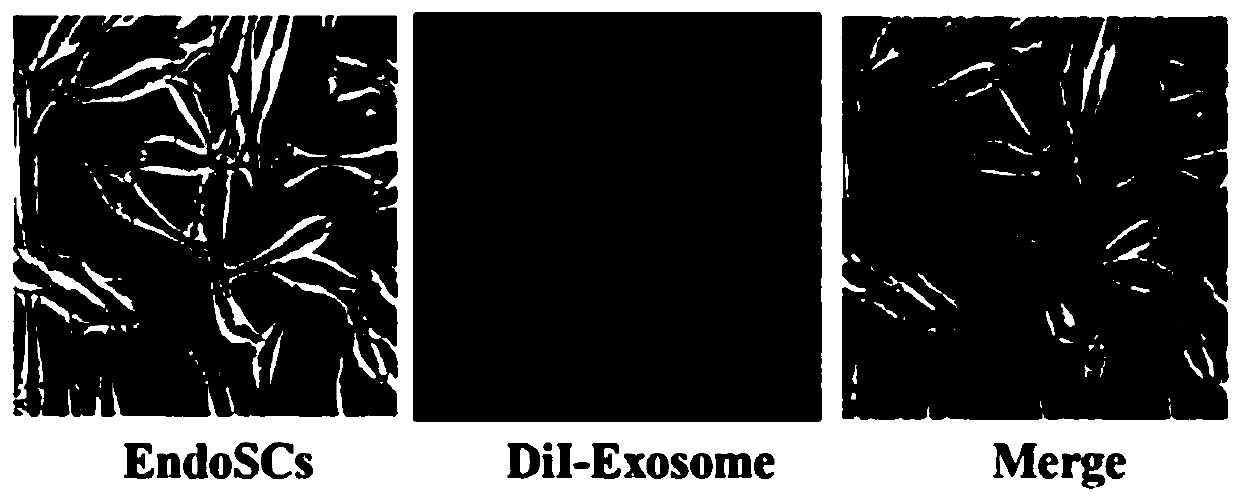Application of exosomes derived from menstrual blood stem cells on preparation of medicament for treating intrauterine adhesion
A technology of intrauterine adhesions and stem cells, applied in the field of biomedicine
- Summary
- Abstract
- Description
- Claims
- Application Information
AI Technical Summary
Problems solved by technology
Method used
Image
Examples
Embodiment 1
[0028]Example 1 Preparation of exosomes derived from menstrual blood stem cells.
[0029] 1. Experimental equipment, materials and reagents.
[0030] Ultra clean bench, CO 2 Incubator, inverted microscope, centrifuge, ultracentrifuge, constant temperature water bath, B-ultrasound machine, 25cm 2 Cell culture bottle, centrifuge tube (50 ml, 15 ml), pipette, 5 ml syringe, artificial insemination catheter, blood collection needle, DMEM-F12 culture medium, 0.25% trypsin, phosphate buffer saline (PBS, Ph=7.4, purchase from Biological Industries, Cat. No. 0044818).
[0031] 2. Primary isolation and culture of menstrual blood stem cells.
[0032] (1) Venous blood collection: Come to the hospital on the first day after menstrual cramps, take 30 ml of venous blood from the blood collection needle, let it stand overnight at 4°C, centrifuge at 3000rpm for 10 minutes at room temperature, take serum, inactivate at 56°C for 30 minutes, and store it at -20°C save.
[0033] (2) Menstrual...
Embodiment 2
[0046] Example 2 Study on the mechanism of intrauterine adhesions in rats treated with blood-derived mesenchymal stem cells and exosomes derived from them.
[0047] Obtain endometrium from a small number of patients during hysteroscopic endometrial adhesion release (routine operation, signed informed consent), culture endometrial cells at the adhesion site in vitro, and red fluorescent dye DiI labeled menstrual blood stem cell-derived exosomes , added to the complete medium for 24 hours, found to be internalized by endometrial stromal cells in patients with intrauterine adhesions, such as image 3 shown.
[0048] 1. Establishment of intrauterine adhesion rat model.
[0049] Female SD rats aged 8-10 weeks were selected, and the bilateral endometrial injury model was established by mechanical injury method. The rats were sacrificed by cervical dislocation 9 days after the injury. Uterine tissue was collected, and the histopathological structure was analyzed by H&E staining, an...
PUM
 Login to View More
Login to View More Abstract
Description
Claims
Application Information
 Login to View More
Login to View More - R&D
- Intellectual Property
- Life Sciences
- Materials
- Tech Scout
- Unparalleled Data Quality
- Higher Quality Content
- 60% Fewer Hallucinations
Browse by: Latest US Patents, China's latest patents, Technical Efficacy Thesaurus, Application Domain, Technology Topic, Popular Technical Reports.
© 2025 PatSnap. All rights reserved.Legal|Privacy policy|Modern Slavery Act Transparency Statement|Sitemap|About US| Contact US: help@patsnap.com



